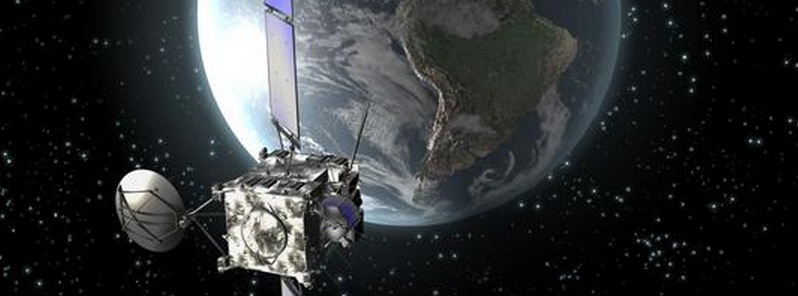An anomaly in satellites’ flybys baffles scientists

Scientists have found anomalies in the speed of space probes such as Rosetta and Cassini, as they fly over certain planets, something they haven't been able to explain. Noticed for the first time during a careful inspection of DSN Doppler data shortly after the Earth-flyby of the Galileo spacecraft on December 7, 1990, such anomalies have continued to perplex the scientists. One of the latest was exhibited by the spacecraft Juno in October 2013, as it was on a journey from Earth en route to Jupiter.
An anomaly in the satellites' flybys have perplexed the space scientists for decades now. When space probes, such as Rosetta and Cassini, fly over certain planets and moons, in order to gain momentum and travel long distances, their speed changes slightly for an unknown reason.
Since space exploration started, many space probes have flown around planets and moons in hyperbolic orbits. This helps them take the advantage of gravitational energy of those planets or moons and reach their target. However, as this takes place, there is something that causes the motion of the space probes to deviate from estimates projected by space scientists.
"There is something very strange going on with spacecraft motions. We have no convincing explanation for either the Pioneer anomaly or the flyby anomaly," says Jet Propulsion Laboratory astronomer John Anderson, who is now working as a retiree.
The anomaly is experienced only when the observed trajectory of the spacecraft can't be fit to a single hyperbolic arc. As the scientists use separate equations for the incoming and outgoing paths, there is a mismatch that neither equation accounts for. What causes the anomalous speed change is still uncertain.This has left the scientists baffled.
When Galileo probe flew past Earth on December 8, 1990, as it was traveling towards Jupiter, NASA was surprised to find that Galileo had accelerated suddenly, and they had no explanation. This boost was very small, but through the use of the Deep Space Network, extremely accurate measurements of the speeding craft could be made. Galileo had actually accelerated by 3.9 mm/s.
The anomaly didn't cease to occur there. During Earth flybys by the space probes NEAR, Cassini-Huygens and Rosetta, all experienced a unexplained boosts of 13 mm/s, 0.11 mm/s and 2 mm/s respectively. As technical faults, observational errors, radiation pressure, magnetic instabilities and electrical charge build-up are ruled out, focus begin turn to more exotic explanations.
Though people didn't pay extra attention to the anomaly at first glance, as it continue to occur, various studies have been conducted to attribute the anomaly to various factors.
However, no single factor has been agreeably held responsible for the deviation of the motion of the probes from that scientists had theoretically calculated. In a study published last month in the journal Advances in Space Research, experts gave their opinion that the anomaly must have originated from something they are still unaware of.
"These deviations do not seriously affect the trajectories of the spacecraft yet, although they are seemingly small amounts, it is very important to clarify what they are caused by, especially in the current era of precise space exploration" Acedo explains.
However, a number of reasons are being considered that may be behind the anomaly.
Luis Acedo Rodríguez, physicist at the Polytechnic University of Valencia analyzes whether or not a hypothetical gravitomagnetic field could have an influence.
However, other factors such as solar radiation, tides, or even relativistic effects or dark matter could be behind this mystery. Stephen Adler at the Institute for Advanced Study in Princeton spoke of the possibility that the spacecraft are banging into lumps of dark matter as they swing past earth.
Magic McCulloch, an unaffiliated astrothinker from the UK suggested that a sudden change in inertia might occur when objects experience very low accelerations. Some may also present the view that Earth's rotation has to do something with the anomaly. Even in this era of higher precision in space exploration, scientists have not been able to put forward a convincing explanation to the fact.
Scientists now feel that the mystery needs to be solved and they have plans to carefully make attempts to find the root cause the anomaly via future space exploration activities.
Montana State University physicist Ronald Hellings once stated, "There's definitely something going on. Whether that's because of new physics or some problem with the model we have is yet to be worked out, as far as I know. A lot of people are trying to look into this."
Reference:
- Luis Acedo Rodríguez. “The flyby anomaly: A case for strong gravitomagnetism?" Advances in Space Research 54 (4): 788–796, August 2014. – DOI: 10.1016/j.asr.2014.04.014
Featured image courtesy of ESA/C.Carreau

A typical article from someone out of touch with what’s going on. Several errors, including quoting a comment of Anderson’s from years ago, which is very much out of date, about the Pioneer anomaly. Get journalists who know their stuff – they way to find out if they do is to ask a physicist.
Hmmmm
Let me think
Considering an other sun; a red dwarf in our binary solar system applying somehow a gravitational effect on the sun , its planets and satellites….could it explain that?